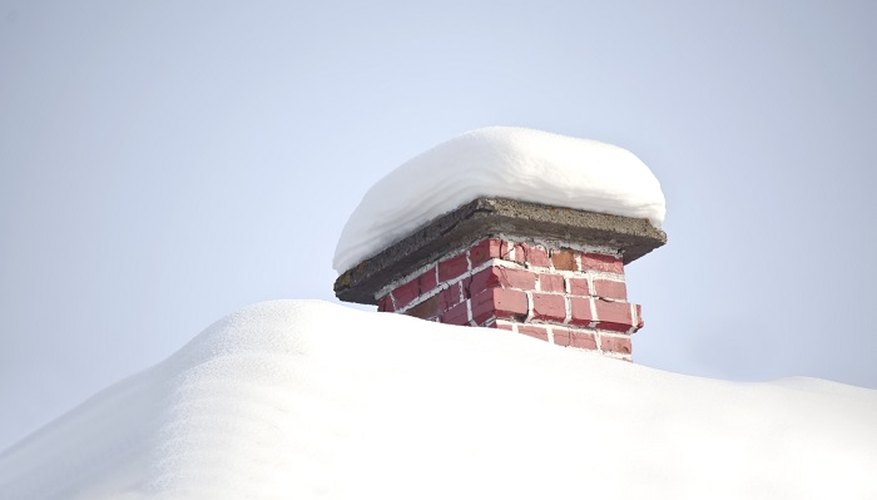Most of the UK doesn't often experience heavy snowfall but engineers still need to factor into this calculations when designing buildings. To work out whether roofing materials are up to the weight -- kg/m2 or kilogram per square metre (psf or pounds per square foot) -- of snowfall. This pressure increases or decreases based on the pitch of the roof. You can compute real-time snow load for quick decision-making or use official figures to design a new building.
Overall snow load calculation
Push the ruler into the snow horizontally in a spot that is representative of the overall snow depth and record the depth in centimetres or inches.
Convert your depth measurement to a figure expressed in metres or feet. For instance, using a snow depth of 38 cm (15 inches): 38 cm divided by 1,000 yields 0.38 m (15 divided by 12 inches yields 1.25 feet).
Collect 0.028 cubic metres (1 cubic foot) of the snow on the ground, choosing a sample that is representative of the overall snow pack, and weigh it. This quantity of snow may weigh up to 91 kg (20 lb) depending on how fluffy or dense it is.
- Push the ruler into the snow horizontally in a spot that is representative of the overall snow depth and record the depth in centimetres or inches.
- Collect 0.028 cubic metres (1 cubic foot) of the snow on the ground, choosing a sample that is representative of the overall snow pack, and weigh it.
Multiply the depth of snow by the weight. For example, 4 kg per cubic metre x 0.38 m = 1.52 so the amount of pressure the snow is exerting on the ground is 1.52 kg per square metre (11.25 lbs per square foot).
Estimate the total weight of snow in your garden by multiplying the size of the area in square metres by the snow load. For example, using a 25 by 20 metre garden: 500 times 1.25 yields 625 kg (1,378 lb) of snow. Use this same calculation to find the total weight of snow on a flat roof.
Roof snow load calculation
Obtain the recorded snow load -- the maximum load expected to accumulate on the ground -- for your area.
Measure the horizontal distance from eaves to the ridge -- the point where the roof is tallest -- and record the result labelled as "run." For example, consider a roof with a run of 12.2 metres (40 feet).
- Obtain the recorded snow load -- the maximum load expected to accumulate on the ground -- for your area.
- Measure the horizontal distance from eaves to the ridge -- the point where the roof is tallest -- and record the result labelled as "run."
Find the rise. This is the difference between the height of the highest point in the roof (the ridge) and the height at bottom of the eaves -- the lowest point on the roof. Label this number the "rise." For example, consider a roof with a rise of 3 metres (10 feet).
Convert the "rise over run" information to a ratio of 12. The rise over run in our example is 3 over 12.2. Expressing this in ratio form, our sample roof has a 3:12 pitch.
Go to a snow load calculator and enter the information requested. This includes the ground snow load for your area, terrain, exposure, roof type, pitch and run. This will give you the kilogram per square metre (psf or pounds per square foot) snow load for your 3:12 pitch roof.
TIP
If you are trying to design a simple building on your own, experiment with changing the ridge height (rise) and width (run) to see what gives you the best results. Either increasing the rise or reducing the run will yield a steeper pitch.
Many planning departments have tables that relate truss size, pitch and materials to the pressure from snow or other factors.
If your roof pitch is steeper than 70 degrees, the snow load will have little or no impact, as the snow is expected to slide off before it builds up enough to be a threat.
